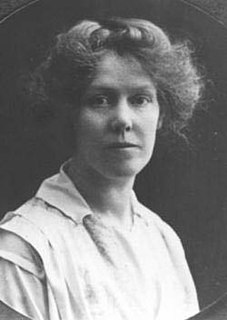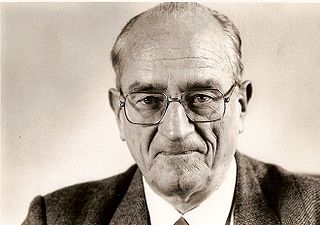
Rudolf Joseph Lorenz Steiner was an Austrian occultist, social reformer, architect, esotericist, and claimed clairvoyant. Steiner gained initial recognition at the end of the nineteenth century as a literary critic and published works including The Philosophy of Freedom. At the beginning of the twentieth century he founded an esoteric spiritual movement, anthroposophy, with roots in German idealist philosophy and theosophy. Many of his ideas are pseudoscientific. He was also prone to pseudohistory.

The Goetheanum, located in Dornach, in the canton of Solothurn, Switzerland, is the world center for the anthroposophical movement.
Karl König was an Austrian paediatrician who founded the Camphill Movement, an international movement of therapeutic intentional communities for those with special needs or disabilities.
Sergei Olegovich Prokofieff was a Russian anthroposophist. He was the grandson of the composer Sergei Prokofiev and his first wife Lina Prokofiev, and the son of Oleg Prokofiev and his first wife Sofia Korovina. Born in Moscow, he studied fine arts and painting at the Moscow School of Art. He encountered anthroposophy in his youth, and soon made the decision to devote his life to it.
Eugen Kolisko was an Austrian-German physician and educator who was born in Vienna. He studied medicine at the University of Vienna, and in 1917 became a lecturer of medical chemistry. He was the son of pathologist Alexander Kolisko (1857-1918).

Louisa Edith Church Maryon, better known as Edith Maryon, was an English sculptor. Along with Ita Wegman, she belonged to the innermost circle of founders of anthroposophy and those around Rudolf Steiner.
Ernst Lehrs was a German anthroposophist, Waldorf teacher, lecturer and writer.

Jörgen Smit was a Norwegian teacher, teachers teacher, speaker and writer, mainly in the context of the Anthroposophical Society and the Waldorfschool Movement. He was the general secretary of the Norwegian Anthroposophical Society, co-founder of the Rudolf Steiner Seminar in Järna, Sweden and member of the Executive Council of the General Anthroposophical Society at the Goetheanum in Dornach, Switzerland.
Francis Edmunds was an educator and Anthroposophist and the founder of Emerson College, Forest Row.
Jakob Streit was a Swiss author, teacher and anthroposophist. Besides this he worked as musician and choirmaster as well as conductor and dramaturg
Ernst Weissert, born 20 July 1905 in Mannheim Germany and died 2 January 1981 in Stuttgart was a teacher, general secretary of the Anthroposophical Society in Germany and co-founder and director of the Bund der Freien Waldorfschulen, the Hague Circle and the Friends of Waldorf Education.
Margaret Cross was a British educator and school principal, a pioneer of Co-education and of Steiner Waldorf education in Britain as well as of Biodynamic agriculture. Together with Hannah Clark she founded the Kings Langley Priory School, later the Rudolf Steiner School Kings Langley, which was closed in March 2019.

Millicent Hughes Mackenzie was a British professor of education at University College of South Wales and Monmouthshire, the first female professor in Wales and the first appointed to a fully chartered university in the United Kingdom. She wrote on the philosophy of education, founded the Cardiff Suffragette branch, became the only woman candidate in Wales in the 1918 general election, and was a key initiator of Steiner-Waldorf education in the United Kingdom.

Wynstones School was a Steiner Waldorf school in Gloucestershire, set on 11 acres near Gloucester. It took pupils from pre-school through to university entrance and has an enrolment of around 275 students.
Violetta Elsa Plincke was a Waldorf teacher and lecturer on education who contributed much to the establishment of Steiner education in Britain.
George Adams Kaufmann, also George Adams and George von Kaufmann, was a British mathematician, translator and anthroposophist. He travelled widely, spoke several languages and translated many of Rudolf Steiner’s lectures into English. Through his studies in theoretical physics, he contributed to the expansion and development of the natural sciences as extended by the concepts of anthroposophy.

Liane Collot d’Herbois was a British painter and anthroposophical painting therapist. She researched light, dark, colour and their application in painting and therapy.

Carlo Pietzner (1915-986) was a co-founder of Camphill, artist, anthroposophist, and a Special Needs and adult educator.
Johannes Tautz (30 September 1914 in Koblenz am Rhein to 13 March 2008 in Dortmund, was a historian, religious scholar, Anthroposophist, author and Waldorf teacher. He concerned himself with a better understanding of National Socialism and with questions of education in the twentieth century.
Ernst Robert Fiechter was a Swiss architect and archaeologist. He is remembered for his research of ancient Greek temple and theatre architecture. He was a cousin to psychologist Carl Gustav Jung.







